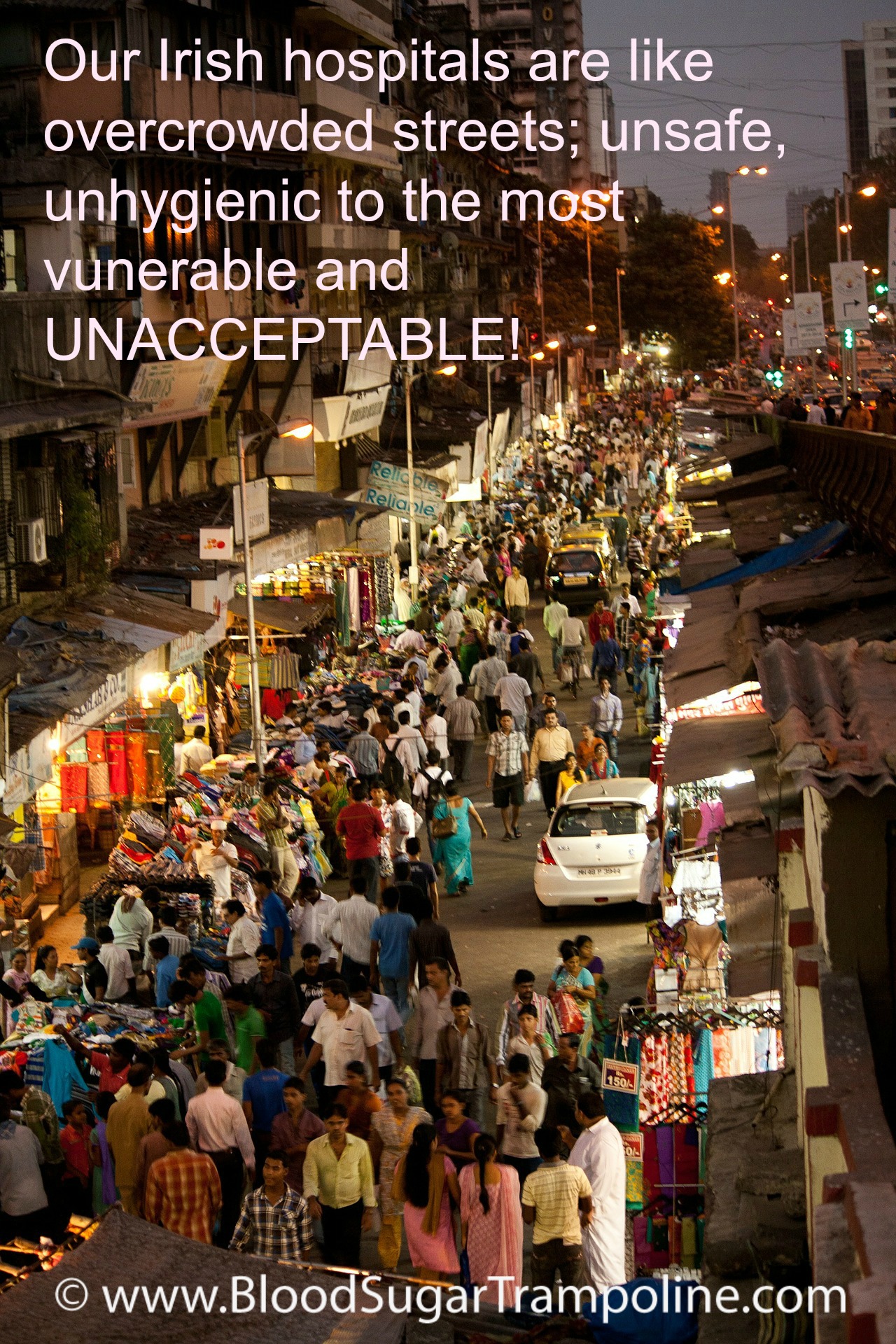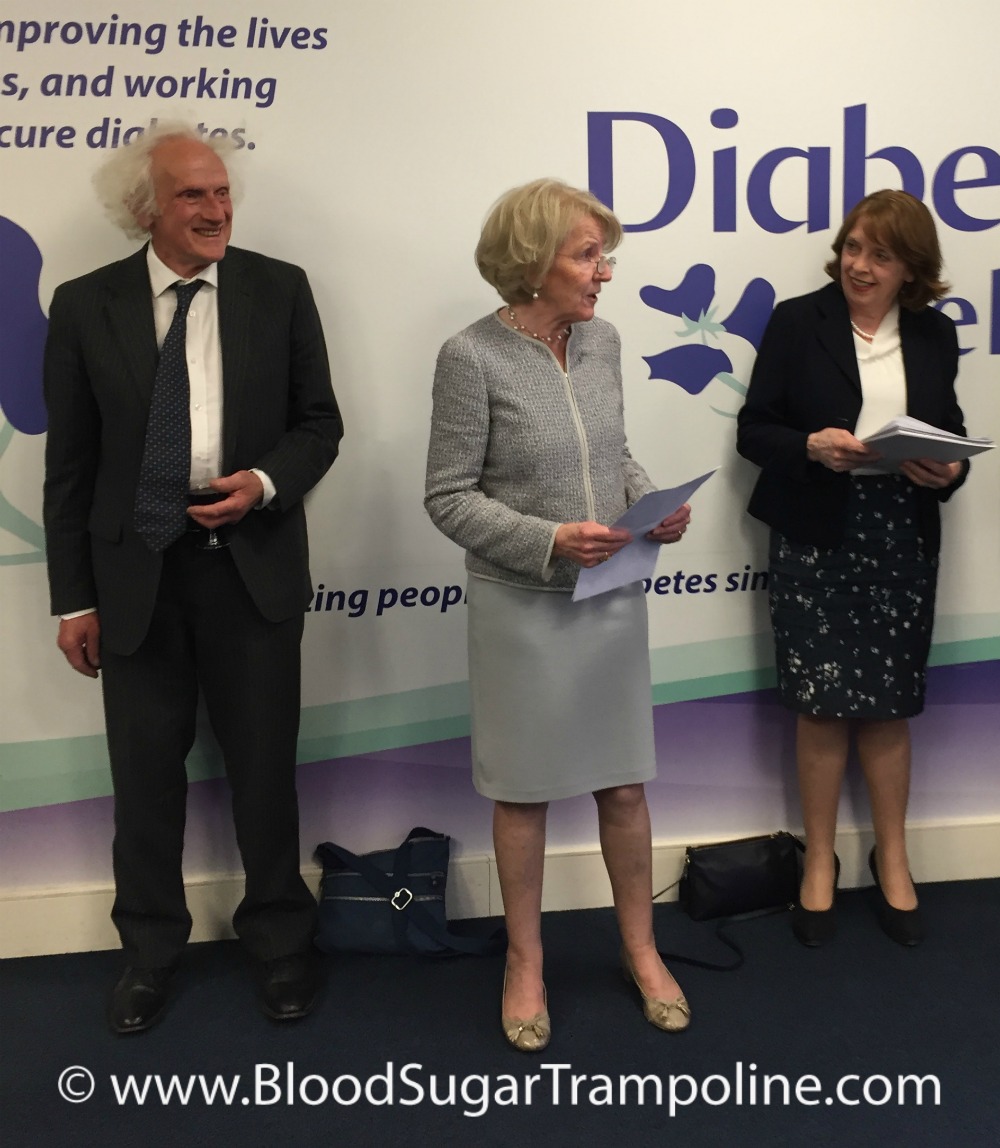The Irish health service is a mess!
You probably know this! I know this! I've known it for a very long time. I’ve been a regular customer patient of our health services for many years, and I continuously tell people about how terribly under funded it is and the chronic shortage of endocrinologists and diabetes nurse specialists.
Yet, I still wasn't prepared for the shock when I walked into the Accident & Emergency department to find my mother on one of three trolleys (that was only the trolleys I could see) lining up the corridor with no chance of getting a bed in a ward, for a second and consequently third night in a row.
This post is not directly related to my life with type 1 diabetes but it does have implications on the health care I receive.
She had gone to A&E on a Friday evening, having been instructed to do so by her GP, she waited six hours in the waiting room before getting as far as a trolley. During those six hours, she had been triaged, had bloods drawn and was shuttled back and forth from the waiting room outside the A&E departement. Her "trolley" was placed in the main corridor entrance/exit hallway of the A&E department. I surmised that she was given a trolley because her treatment had to be administered through an IV. There she stayed, her trolley moved from corridor to corridor to allow for new patients to take up trolleys, until Monday late morning.
When I visited with her and it was extremely difficult; I was standing at the end of her trolley but as it was the main entrance/exit to the department, I was in the way constantly.
While there I noticed a couple of things that were disturbing to say the least.
The patient across the narrow corridor wedged into an alcove which was JUST wide enough for a trolley. I noticed her towel was drying on a IV drip rack. My mother said she had been there for 4 nights. This prompted the question of how many bathrooms/showers were there available for all of these patients. The answer is one bathroom with one shower for all the patients which was used as a storage area also. Hygiene standards so low in an area where hygiene is so important.

My mother has private health insurance and was using it. So her health insurance company will be charged as if she had a bed in a ward. Neither hospital, patient nor health insurance company wins in this situation.
I notice a young couple with a small child who were shuttled back and forth several times from the waiting room outside the A&E departement. I notice that it was the gentleman who was wearing the admittance wristband. This lead me to believe that because they were waiting on test results and he didn’t require treatment he was left in the waiting room.
WHY ARE PATIENTS ON TROLLEYS?
It’s really very simple! And it’s been said over and over by many, many experts.
“The reality is that there are not enough acute hospital beds, so people who need to be admitted to hospital end up on trolleys,” Dr Fergal Hickey, the IAEM’s Communications Officer, explains to TheJournal.ie.
Our hospitals need more beds and to have more beds they need more nurses. And we have nurses who want jobs. So what the fecking hell is holding this up?
Money!
So let’s invest more in our health service and let’s pay more income tax to pay for it. I, for one, do not mind one little bit paying more taxes to get it! If it means that I, or anyone I care about, is well looked after if they get sick.
WHAT WE HAVE AT THE MOMENT IS NOT ACCEPTABLE!
Yet, this has been the situation in our Irish hospitals since I moved back to Ireland in 2006. We all remember the actor, Brendan Gleeson's passionate plea for his mother on The Late Late Show!!!
Our emergency departments are a huge health and safety risk. Major! If you are not sick going into a hospital, you will definitely be sick when you leave! There is a complete lack of infection prevention control measures, in most hospital wards but especially in accident emergency departments (as witnessed by my brother when my mother was brought in - not a single staff member wore gloves or washed their hands. NOT ONE).
Patients spending multiple nights on trolleys is treated as normal practice. Patients have a complete lack of privacy, dignity or basic hygiene.
None of this is acceptable!
OUR HEALTH CARE EMPLOYEES ARE….
overworked and stressed to the point of exhaustion.
Our newly qualified nurses are paid a starting wage of €14.39 (information from a friend who has nearly two years experience). Since 1 January 2017, the national minimum wage for an experienced adult employee is €9.25 per hour. This same friend has had to give up her private health insurance because she couldn’t afford it!!
The current nurse:patient ratio leaves both nurses and patients in very unsafe and dangerous situations on a constant basis.
There is a huge deficit of nursing staff in the HSE. There are recruitment events on an ongoing basis but it is a slow process.
Our Irish hospitals are unionised, heavily, but with a health service top heavy with managers and scarce on frontline staff it’s hard to see who the union is serving first.
How is any of that OK?
SOLVE IT!
I don’t want our health service employees to work less. I want more front line staff in all departments and more beds. Stop trying to recruit our Irish nurses back from overseas until you give our new nurses a decent wage. Start at home! Word will spread and they will come home without expensive recruitment campaigns.
Seriously, is it really more complicated than that????
To all the policy decision makers and implementation makers,
Stop talking, start funding and start doing!
Because I can't do anything, not a single thing and it's killing me and thousands of others - YOU have to do it!





 Last Thursday evening, Diabetes Ireland launched a book detailing their 50 years in existence. I was so proud to be there to witness it, so honoured to be asked to contribute and excited to meet some diabetes legends.
Local TD, Róisín Shortall did the honours and gave a lovely speech, as did chairperson, Hilary Hoey and CEO Kieran O’Leary.
Last Thursday evening, Diabetes Ireland launched a book detailing their 50 years in existence. I was so proud to be there to witness it, so honoured to be asked to contribute and excited to meet some diabetes legends.
Local TD, Róisín Shortall did the honours and gave a lovely speech, as did chairperson, Hilary Hoey and CEO Kieran O’Leary. They must have come from all over. The first mission of the organisation was to make insulin free to patients. They achieved this within their first two months. And then secured all other diabetes supplies on the Long Term Illness scheme in 1971.
They must have come from all over. The first mission of the organisation was to make insulin free to patients. They achieved this within their first two months. And then secured all other diabetes supplies on the Long Term Illness scheme in 1971.



